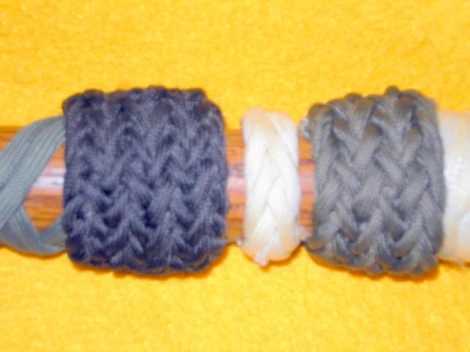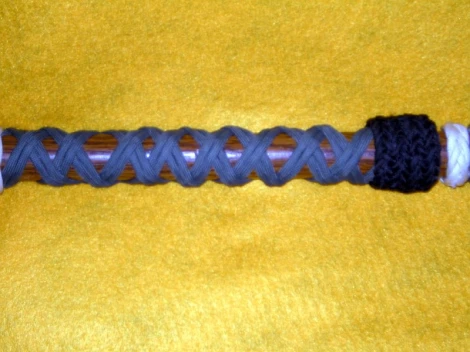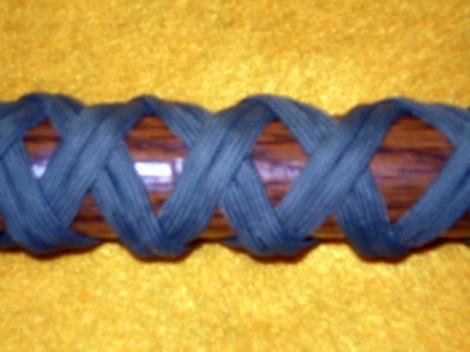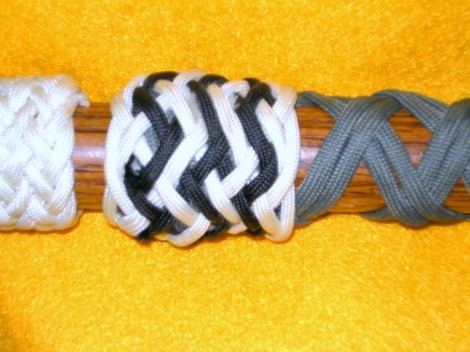Both my link checking, and some of my readers, have prompted me to interrupt the posts on walking sticks with this public service announcement.
The link to the page at the “Semantron” blog for the downloadable PDF file is dead. This is the only tutorial for the “one-handed cat’s cradle” method of tying the knots for an Orthodox Church style prayer rope which I have found. Rather than let this document disappear into the void I am posting a copy for download from my site. Please note that I did not make this tutorial and claim neither authorship nor ownership. I will attempt to contact the author by E-Mail and get his permission to leave this file here for download — or at the very least see if he is going to activate a live link to the file.
I will confess to being surprised by the interest level in this chain of posts. The coincidence of the knots being of the same structure as the Sailor’s Knife Lanyard knot is a little esoteric for most people, so I must assume there is a high level of interest in making prayer ropes and their kin. A quick Google will reap a collection of links to sites which show how to make knotted rosaries similar to those used by the Roman Catholic Church. Most of them employ some version of the Multiple Overhand knot to make the bead substitutes. Many of these appear to be made for personal use, but many are also made for distribution to the public or to US armed services members, particularly those stationed in forward areas overseas.
I have to admit that the Multiple Overhand knots would be quicker and easier — myself, I would prefer to invest the additional effort needed to make them with the Sailor’s Knife Lanyard knots.
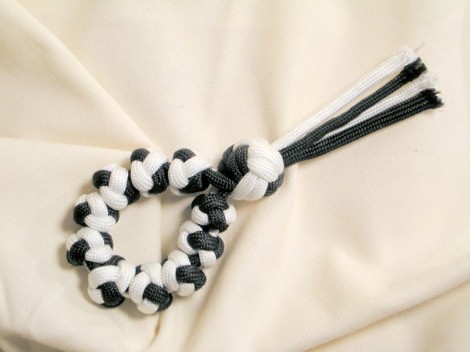
A very short prayer cord to show the use of the Sailor's Knife Lanyard knot.
The short sample in this photo, which was made in paracord, convinced me of that. If this was made out of a smaller diameter cord, with the knots spaced out for easier counting off, it would be a fine specimen. It is structurally sound, clean lined and, to my eye, handsome. You do have to remember that my aesthetic views on knotwork were formed while hanging around boats ranging from commercial fishing craft to classic wooden sailboats. I also grew up with a romantic longing for the sea in the days of the square riggers. Like most romantic views it was unrealistic. One trip around the horn, or even having to do my favorite decorative knots under the eye of a bully bosun’s mate with a ready belaying pin in hand would have cured everything.
I finally found what I believe to be the original video tutorial which provided the material for the mash-up that started this trip. You can go to the original site here. I would suggest you read the page under the links to the videos as well, since it has some additional hints. This is undoubtedly the original material — the now extinct mash-up did not improve the lessons. This tutorial is more instructive, even though it is an amateur production, and the larger file size is spent on things that make it easier to follow.
I would not be surprised if you had to use the video and its containing page AND the PDF download to make the knots by the one-handed cat’s cradle technique. I find the sailor’s in-hand method much faster and easier, but that may be because it is the way I have tied these knots for years.
The links to the previous posts on this subject are below, oldest on top, and please remember some of the links are dead:
Thank you for stopping by my site, and a special thanks to those of you who have returned to follow this chain of posts. Come back again; the parade of knots is starting to line up nicely.
Yours:
William
